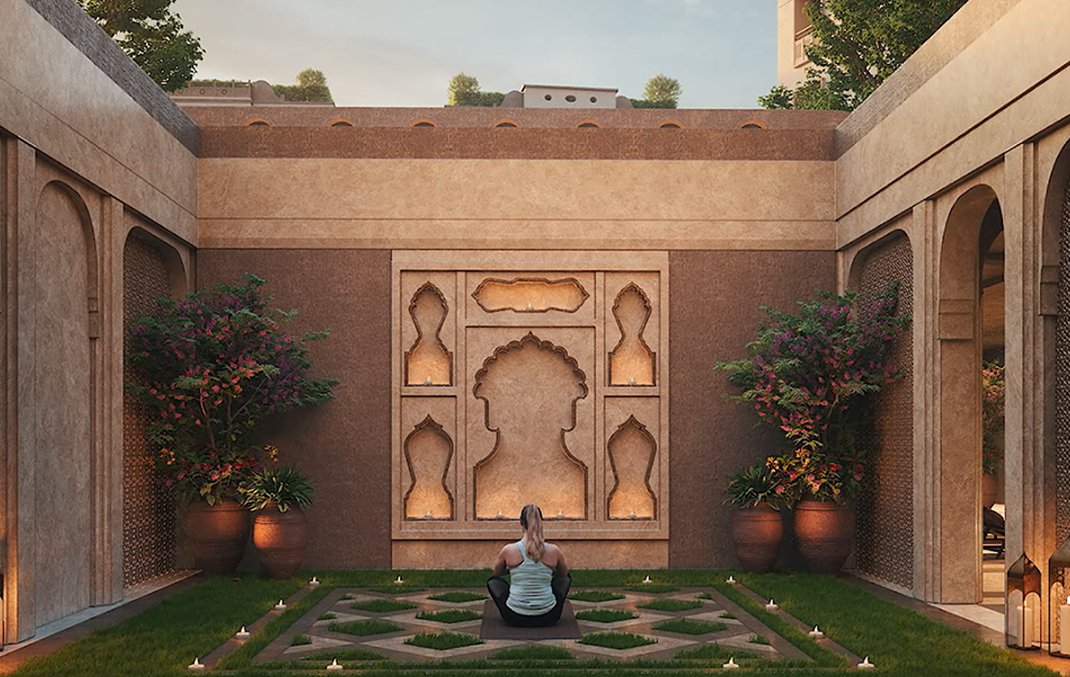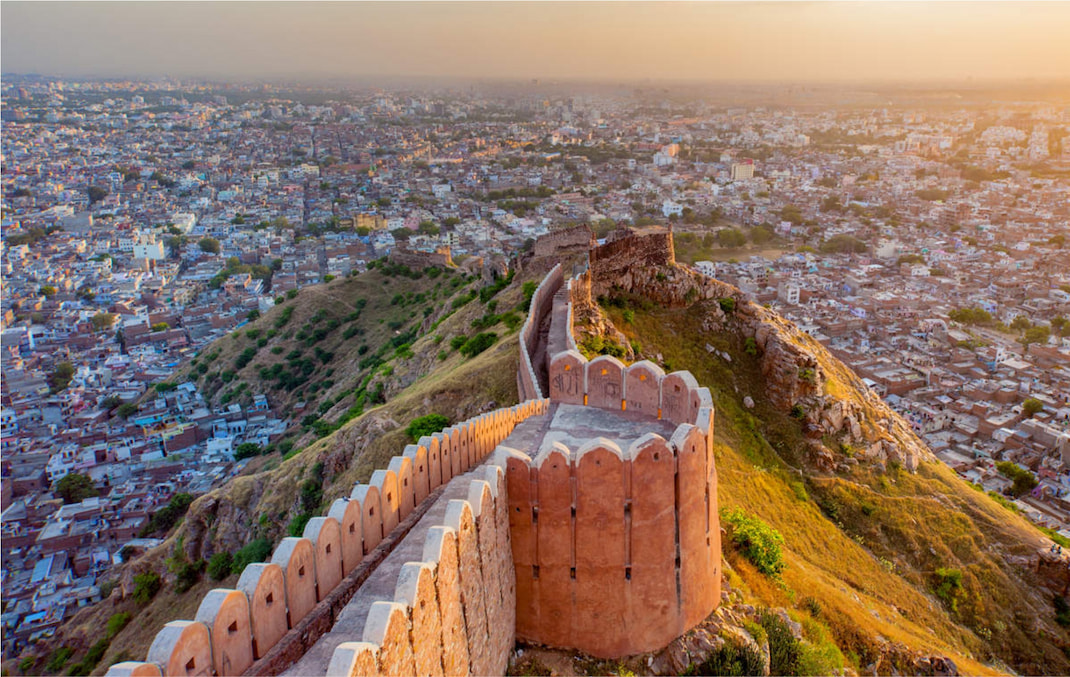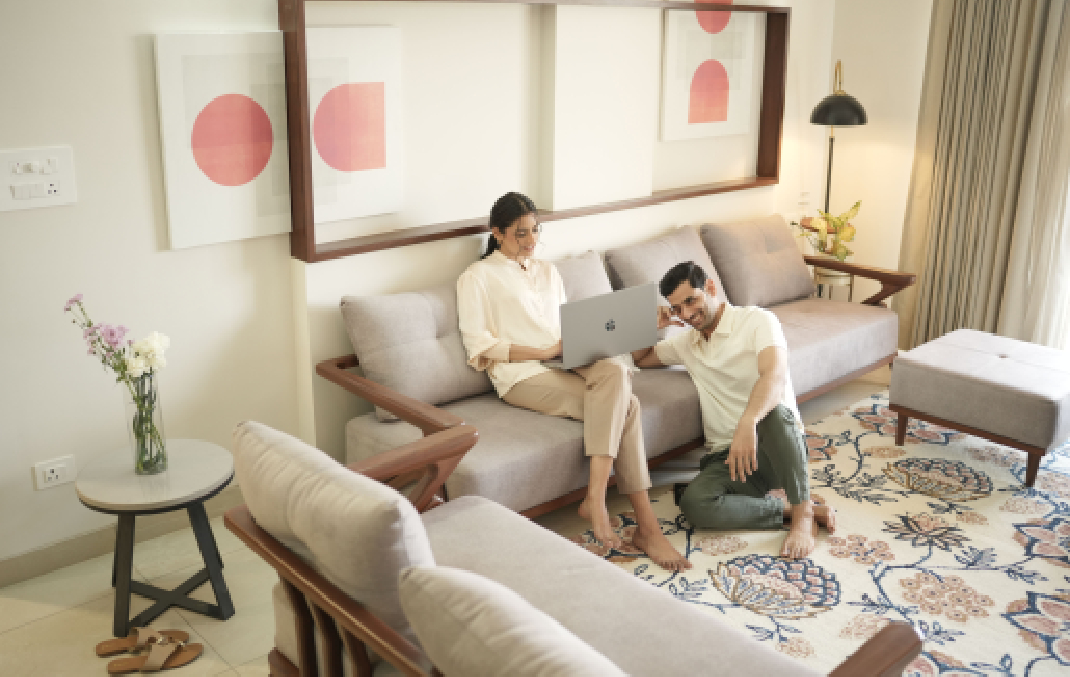PUBLISHED ON - 06 Nov' 2025
Themed Luxury Real Estate is the Next Big Investment Trend in India

Luxury real estate in India is evolving into something more thoughtful and expressive. It’s no longer about square footage or amenities. The new measure of luxury lies in how a space makes you feel- how it connects to your identity, your aspirations, and your sense of belonging.
This growing desire for meaningful living has given rise to a new movement in Indian real estate: themed luxury developments.
The Rise of Themed Luxury Real Estate
Across India, a new generation of developments is combining architecture, art, and emotion. These projects are not designed to just impress: they are designed to immerse. Every curve, courtyard, and corridor tells a story.
High-net-worth buyers are increasingly drawn to these curated environments because they go beyond surface-level luxury. A themed home blends cultural inspiration with craftsmanship and creates a lifestyle that feels authentic and rooted. According to the ANAROCK Luxury Housing Outlook 2025, India’s luxury real estate market is expected to continue its double-digit growth, driven largely by buyers seeking emotional value and long-term legacy.
For investors, the appeal is clear. Themed projects stand apart in crowded urban markets. Their uniqueness creates lasting demand and higher resale value, catering to both prestige and permanence.
Jaipur’s Architectural Heritage: A Foundation for Timeless Design
To understand why themed living is gaining popularity, one must look to a city that has always known how to balance design with meaning: Jaipur.
Planned in 1727 by Maharaja Sawai Jai Singh II, Jaipur was the first city in India built on architectural and astronomical principles. Every street followed symmetry, and every square had purpose, and every façade carried an artistic rhythm. The result was a city that felt alive yet orderly — one that reflected the soul of its people through design.
Jaipur’s architecture is a celebration of form, proportion, and light. From the pink facades of Hawa Mahal to the courtyards of City Palace, the city’s built environment was designed to breathe. The latticework windows allowed air to circulate while creating beautiful patterns of shade. The arches framed movement and invited interaction. The courtyards became places of gathering, reflection, and harmony.
This was architecture, not as shelter, but as philosophy. And that same philosophy is now finding a new expression in Jaipur’s most remarkable themed development – Sawai by Akshat.
Sawai – The Revival of Architectural Grandeur
At the heart of Jaipur, near the legendary Statue Circle, stands Sawai – a project that reimagines the grace and grandeur of the city’s royal architecture for contemporary living. Developed by Akshat & Meel and designed by MA Architects, with landscape design by Thailand’s P Landscape, Sawai is not just a collection of residences. It is an interpretation of Jaipur itself — its rhythm, its geometry, and its enduring beauty.
The idea behind Sawai is simple yet profound: to bring back the spatial poetry of Jaipur’s heritage within a modern urban context.
Every design decision pays homage to the city’s timeless architectural language.
Arches and Proportions: Sawai’s façades draw directly from the city’s rajput vocabulary — tall arches, deep verandas, and jharokhas that reinterpret royal palaces for modern proportion and privacy. Each elevation carries a sense of balance, much like Jaipur’s original city grid, ensuring harmony between light, shadow, and structure.
Courtyard Planning Reimagined: Traditional Jaipur homes revolved around an open courtyard — a central space where families gathered, festivals were celebrated, and air circulated naturally. Sawai revives this principle in a vertical format. Every tower and bungalow opens to landscaped pockets, water features, and reflective courtyards that allow nature and architecture to coexist seamlessly.
Locally Rooted Craftsmanship: Jaipur’s architectural heritage was built on the skill of local artisans. Sawai extends that lineage by using Bijoliya stone for the façade and Banswara marble for the interiors — both sourced from Rajasthan. These materials not only lend authenticity but also help with thermal insulation and sustainability.
Spatial Experience of Royal Living: Each residence has its own private elevator lobby and spans the entire floor plate, offering complete privacy — much like a bungalow in the sky. The one-floor-one-home concept evokes the exclusivity of royal quarters, while the 9.75 ft ceilings and expansive balconies bring openness and natural light reminiscent of the old city’s airy mansions.
Landscape that Breathes Heritage: The 32,000 sq. ft. clubhouse and the landscaped podium reflect the essence of Jaipur’s gardens — symmetry, reflection, and tranquility. Over an acre of urban forest sits within the campus, creating an oasis at the city’s core. The meandering walkways, lily ponds and the amphitheatre connect residents to nature much like Jaipur’s traditional gardens once connected its palaces to the Aravalli foothills.
Design that Honors Space: Only 27% of the land is built upon, while the remaining 73% remains open and green. This low-density planning gives Sawai a sense of calm, rare in urban living. It ensures privacy without isolation and community without congestion.
Sawai’s architecture speaks the language of legacy, yet it feels entirely current. The arches are lighter, the courtyards brighter, the materials more durable — all made possible by modern engineering. It is a dialogue between the past and the present, where tradition evolves without losing its essence.
When you walk through Sawai, you do not see a building; you feel a narrative where craftsmanship, scale, and emotion merge into a living experience. It is Jaipur reborn, not in imitation but in spirit.
Emotional Worth and Financial Wisdom
Themed developments like Sawai carry an intangible yet powerful advantage — emotional equity.
For HNIs, the emotional narrative of a home contributes to its sense of permanence. It creates a sense of legacy, something to pass on rather than simply own. And as luxury real estate matures, emotional depth becomes a key differentiator of value.
From an investment standpoint, themed homes hold long-term appeal. They stand out in resale markets because of their design identity and scarcity. Projects that are location-anchored, culturally inspired, and architecturally distinctive tend to command higher premiums and age gracefully over time.
Sawai’s recognition at the Economic Times Real Estate Awards 2025 for Best Residential Project – Theme-Based (North) reinforces this truth. It represents more than a design milestone — it marks Jaipur’s emergence as a national leader in themed luxury real estate.
The Future of Luxury Real Estate in India
India’s luxury housing market is no longer defined by imported aesthetics. It is now shaped by context, craftsmanship, and cultural continuity. Buyers want authenticity. They value homes that resonate with where they come from — spaces that tell stories of their land, their heritage, and their time.
Themed real estate is set to define the next decade of growth because it aligns emotion with economics. It gives developers a distinctive design language and offers investors a product that will never go out of style.
Sawai proves that architecture can be both timeless and forward-looking. It brings Jaipur’s centuries-old design philosophy into the present, offering a living experience that is artistic, sustainable, and emotionally rich.
In doing so, it reaffirms a simple truth: When architecture tells a story, its value never fades.


